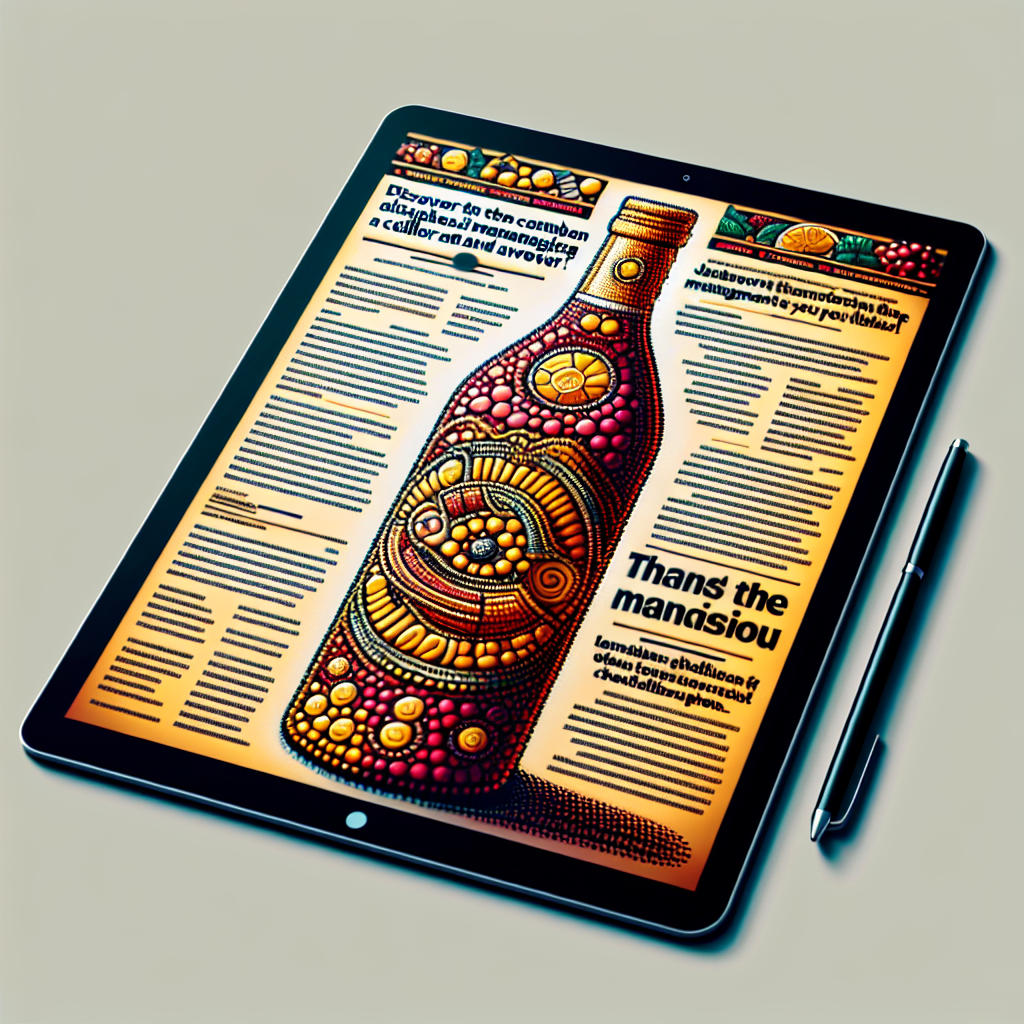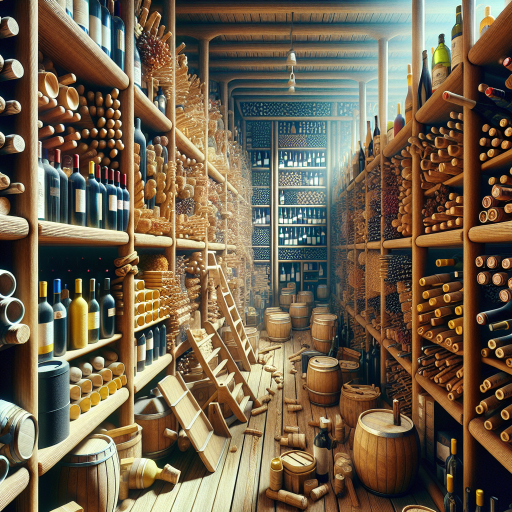
Introduction
Common Challenges in Wine Cellar Management
Managing a wine cellar can be a delightful journey, whether you're a novice or a seasoned enthusiast. However, it's not without its challenges. Have you ever struggled with temperature fluctuations or pondered the best way to organise your bottles? These are common hurdles many face. We often overlook the importance of humidity, risking the integrity of our precious labels and corks. Then there's the temptation to open bottles prematurely, a deed many confess to in moments of impatience. By recognising these challenges, we can learn to finesse our approach, ensuring our collections mature gracefully. Join us as we delve into the most frequent missteps in wine cellar management and discover how you can safeguard your oenological treasures.
Why Proper Management Matters
We all appreciate the elegance of a well-curated wine cellar, yet the true value lies in proper management. Why does it matter, you ask? Imagine unearthing that cherished bottle, only to discover it's past its prime due to improper storage. Whether you're a budding enthusiast or a seasoned aficionado, managing your wine collection effectively is crucial. It ensures every bottle remains in its optimal state, ready to deliver its intended flavours and aromas. Furthermore, it protects your investment, both financial and emotional. With the right approach, we can savour our wines as their creators intended. Together, let's delve into the common pitfalls and learn how to avoid them, ensuring our collections bring us joy for years to come.
Common Mistakes in Wine Cellar Management
Improper Storage Temperature
One of the most common pitfalls in wine cellar management is not maintaining a proper storage temperature. Wine is a delicate product that can suffer from significant fluctuations. When stored too warm, wines can age prematurely, losing their intended taste and aroma. Conversely, storing wine at too cold a temperature can stunt its development, dulling its rich flavors. Ideally, wines should be stored consistently at a cool, steady temperature, around 12°C (54°F). By doing so, you ensure that your collection matures gracefully over time, retaining the characteristics the winemaker intended. Remember, a stable environment is crucial, and investing in a quality thermostat can safeguard your prized bottles.
Lack of Inventory Tracking
In wine cellar management, one common pitfall is the lack of inventory tracking, which can lead to significant disruptions in your collection. Without an organised system to monitor your bottles, you might lose track of valuable vintages or, worse, miss the prime time to savour them. Imagine the disappointment of discovering a treasured bottle past its peak. To avoid this, it's essential to implement a simple tracking method, whether through a digital app or a traditional notebook. By recording each wine's details – purchase date, optimal tasting window, and storage position – you not only preserve the integrity of your collection but also enhance your overall wine experience. Let’s take the step towards a more intuitive and rewarding cellar management journey.
Neglecting Regular Inspections
Neglecting regular inspections of your wine cellar is a common oversight that many of us fall into. It's easy to assume that once your bottles are safely stored, they require little attention. However, ignoring routine checks can lead to unnoticed issues like temperature fluctuations, humidity imbalances, or even pest problems. By engaging in regular inspections, you ensure each element of your wine storage environment is optimal. Make it a habit to check your cellar conditions monthly, not only to spot potential problems early but to maintain peace of mind. After all, consistent care ensures your wines mature gracefully, safeguarding your investment and enhancing your drinking experience. So, let's keep our cellars in top shape, one inspection at a time!
Ignoring Wine Maturity
One common mistake we often encounter in wine cellar management is ignoring wine maturity. It's all too easy to lose track of those bottles tucked away in the cellar, forgetting that wine is a living product with its own life cycle. Failing to pay attention to a wine's maturity can lead to disappointing experiences when an eagerly awaited bottle has passed its prime. To avoid this, we recommend keeping an organised inventory that notes each wine’s optimal drinking window. Regularly reviewing and updating this inventory will help us savour our collection at its best. Let's ensure that every uncorked bottle delivers the rich flavours and aromas it was meant to offer.

How to Avoid Common Mistakes
Optimising Storage Conditions
When it comes to optimising your wine storage conditions, consistency is key. First and foremost, ensure a stable temperature, ideally between 10°C and 15°C, as fluctuations can spoil your cherished bottles. Humidity is another crucial factor; aim for a level around 70% to prevent corks from drying out and wines from oxidising. Avoid exposing your collection to direct sunlight, which can degrade both the label and the wine inside. A dark, consistent environment is a wine's best friend. Lastly, consider the importance of storing bottles horizontally. This keeps the cork moist and prevents unwanted air from seeping in. By maintaining these ideal conditions, you're giving your wines the best chance to mature gracefully and deliver their full potential.
Implementing Inventory Systems
When it comes to efficient wine cellar management, implementing a reliable inventory system is indispensable. Many enthusiasts tend to overlook this, resulting in disorganisation and undetected imbalances in their collection. By embracing digital solutions or traditional methods like spreadsheets, you can track every bottle meticulously, noting purchase date, provenance, and even tasting notes. This approach not only streamlines the process of locating a specific vintage but also ensures that we never miss an opportunity to enjoy a wine at its peak. Remember, a well-managed inventory is the backbone of any successful cellar, helping us savour each sip with confidence.
Setting Up a Maintenance Schedule
To ensure your wine collection matures perfectly, implementing a regular maintenance schedule is essential. We should remember that a well-organised routine not only safeguards our precious bottles but also enhances our overall wine cellar experience. Begin by monitoring your cellar’s temperature and humidity levels weekly with reliable instruments, ensuring they remain within the optimal range of 10-15°C and 60-70% humidity. Regularly inspect for any signs of mold or pests, which can compromise wine quality. Additionally, rotate your wine stock every few months, so you can enjoy each bottle at its peak. By adopting these proactive steps, you’ll find your cellar becomes a true sanctuary for both your wines and your passion for oenology. Let’s not forget—consistent care is the key to preventing common pitfalls and preserving the essence of every vintage.
Planning Wine Consumption Strategically
Pour maîtriser l'art de la gestion de cave à vin, il est essentiel de planifier votre consommation de vin de manière stratégique. Nous vous suggérons d'organiser votre cave en tenant compte des occasions spéciales et des préférences saisonnières. Pensez à classer vos vins selon leur maturité, en réservant les bouteilles prêtes à boire pour des événements à court terme et en permettant aux jeunes crus de vieillir gracieusement. Grâce à une rotation intelligente, vous éviterez le déclassement de vins précieux et optimiserez votre expérience gustative. En préparant un calendrier de dégustation annuel, vous pouvez anticiper les besoins en approvisionnement et garantir que votre cave reste toujours bien équilibrée. Ainsi, vous transformerez chaque ouverture de bouteille en une aventure envoûtante.
Conclusion
Taking Charge of Your Wine Collection
In taking charge of your wine collection, we empower ourselves to create a harmonious environment for our cherished bottles. Avoiding common pitfalls in wine cellar management is a journey of learning and adaptation. By implementing consistent temperature control, proper humidity levels, and smart organisation strategies, you ensure each bottle reaches its full potential. We encourage you to involve yourself in understanding the unique needs of your collection—whether that means investing in a reliable wine fridge, learning the art of cataloguing, or simply rotating your stock periodically. Remember, successful wine cellar management is not only about preservation but also about enhancing your personal enjoyment. By addressing these key aspects, you're paving the way for a rewarding and enriching experience, one that can be savoured with every pour.
Encouragement to Use Viniou
In managing a wine cellar, keeping track of your collection and understanding its evolving needs requires a blend of knowledge and technology. Here at Viniou, we believe that with just a bit of guidance, everyone can excel in cellar management. Our platform offers the perfect blend of user-friendly tools and insightful resources to help you manage your wines like a pro. By utilising Viniou, you can avoid common pitfalls such as disorganised storage or missing optimal tasting windows. We are committed to making your wine journey both enjoyable and stress-free. So, whether you're a novice or a seasoned enthusiast, let’s make your wine collection a source of pride and pleasure together.